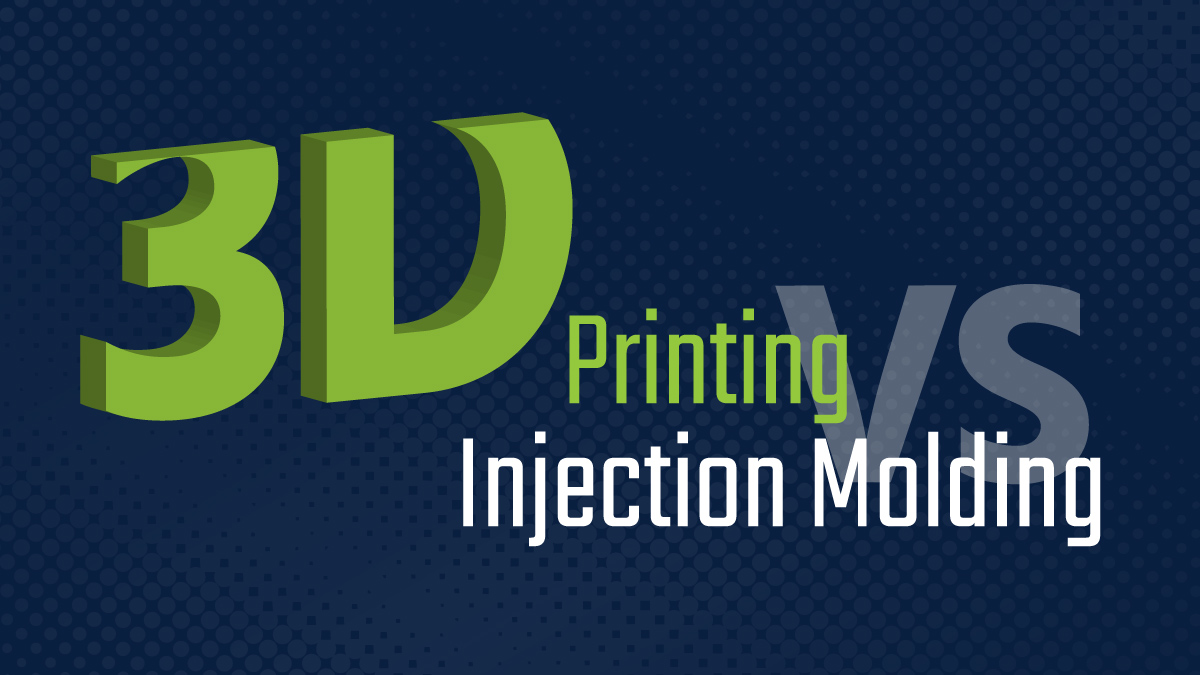
Are you wondering which mass manufacturing process to use for your next project? (hint: injection molding vs 3D printing)
Maybe you have a prototype and you’re ready to produce a large number of physical products for your customers, or you’re starting from square one.
Does your project require continuous production and high production efficiency?
If your answer is yes, you now have a few choices to make. Which manufacturing method are you going to use to create the physical components of your product? Which outside provider will you trust with the task?
While 3D printing is considered an emerging technology, the molded plastics market is expected to reach $202.2 bn toward the end of 2024.
There is no single method that is ideal for every project. There are situations in which one is more practical or cost-effective than the other.
Keep reading to discover more about injection molding vs 3D printing – when to use one or the other, and when to use both!
Injection Molding vs 3D Printing
3D printing is a newer technology, so it has gained a lot of attention over the last several years. Injection molding, however, is a tried and true method that should not be forgotten.
Injection molding is a process wherein a molten material is poured into, or injected, into a metal mold. The material takes on the cavity shape of the mold, is cooled, and then ejected from the mold. What you’re left with is one solid part.
After the part is removed, the process begins again.
3D printing is the process of using a three-dimensional digital object to make a physical object. This is done by laying down many thin layers of material at the sub-mm level. It differs from injection molding in that it is a virtually tool-less, additive process.
When to Consider Injection Molding
In its most basic form, the injection molding process has existed since the 1800s. The process, which began as a technique for making small consumer objects such as buttons, has since transformed the industrial manufacturing industry.
Your parts are simple. Injection molding is best for creating simple physical shapes without irregular features. This type of manufacturing process is best for hard manufacturing constraints.
You’re required to use a certain type of material. If you need to use a specific plastic to create your part, injection molding is the best choice. 3D printing limits your choice of material, while the range of formulations you can use for injection molding is unmatched.
You’re producing a high volume of units. If you are producing parts in the thousands, you will want to stick with the injection molding process. The process is consistent and repetitive, which is vital to a mass production project.
You’re short on time. The injection molding process is much faster than 3D printing. With an average time of 15 to 120 seconds between each cycle, injection molding produces a higher quantity of parts within a shorter amount of time.
This reduced cycle time increases your profit margins, which means more revenue for you!
You’re looking for consistent quality. Because of the use of a mold, the injection molding process allows you to produce materials with strict uniformity. This is especially important in the automotive and medical industries, wherein critical machines rely on parts to function correctly.
When to Consider 3D Printing
3D printing has gained popularity in the manufacturing industry. Here are a few situations that might require manufacturing by a 3D printer.
Your parts require detailed, highly irregular shapes. 3D printing is responsible for most parts that consist of creative, complex shapes.
You need to create a prototype. One advantage of 3D printing is the ability to create a prototype without spending much money upfront.
If you have a short turnaround time. Injection molding requires considerable lead time because a mold must be created before production can begin. When 3D printing, you can use technology to create a prototype and start right away.
When to Use Them Together
You don’t necessarily have to choose one manufacturing process over the other. In most cases, 3D printing and injection molding can complement each other when working in tandem.
Use 3D printing only for the design process. Because of the ease of prototype design that 3D printing offers, you can design parts quickly. If you’re short on time, you can take a 3D printed design to your outside manufacturer, who will use it to create a mold.
You can 3D print your mold. Don’t want to wait for your mold? Take advantage of both processes by creating your mold using the 3D printing process. You can then use that mold to mass produce your product with injection molding!
If Cost is a Factor
The cost of your project largely depends on the number of parts you will produce.
Injection molding is hands-down the most cost-effective process if you are producing a large volume of pieces.
If you’re just starting a project, 3D printing may be a smart choice. This is because you typically won’t have to pay much up front for prototype creation.
However, as you move further down your project timeline, you may find that injection molding will save you money. You will spend less on materials and labor and your manufacturing time will be shorter.
Let’s Get Started
There is a reason why injection molding has been the go-to manufacturing process for many years. Most serious manufacturing projects are undertaken with injection molding vs 3D printing.
If you’re looking for a cost-effective, long-term solution for your manufacturing needs, you require a reliable outside parts manufacturer.
We may be a small company, but we’re up for a challenge and excited to design for you!
If you’re convinced and ready to get started on your next project, request a quote today.
